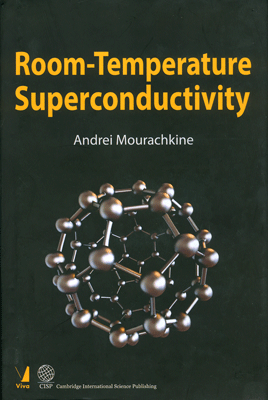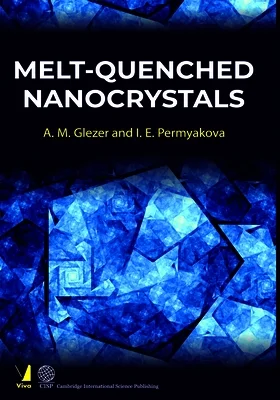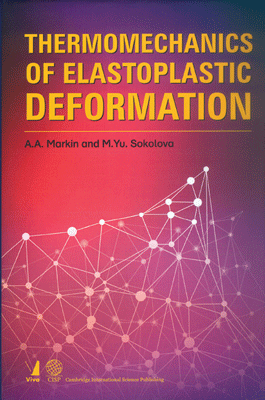Room-Temperature Superconductivity
Room-Temperature Superconductivity
₹1,525.50 ₹1,695.00 Save: ₹169.50 (10%)
Go to cartISBN: 9789386105431
Bind: Hardbound
Year: 2017
Pages: 326
Size: 147 x 229 mm
Publisher: Cambridge International Science Publishing
Published in India by: Viva Books
Exclusive Distributors: Viva Books
Sales Territory: India, Nepal, Pakistan, Bangladesh, Sri Lanka
Description:
This is the first book on the subject of room-temperature superconductivity. The main purpose of the book is twofold. First, to show that, under suitable conditions, superconductivity can occur above room temperature. Secondly, to present general guidelines on how to synthesize a room temperature superconductor. The book begins with an introduction into the physics of the superconducting state and superconducting materials. The mechanisms of conventional, half-conventional and unconventional superconductivity are discussed in the book. The last three chapters of the book are devoted to room temperature superconductivity. In Chapter 2, an attempt to review the basic properties of the superconducting state independently of any specific mechanism is made for the first time. In addition, four principles of superconductivity valid for any type of superconductivity are introduced in Chapter 4. The book is mainly addressed to specialists in materials science and in the field of superconductivity. At the same time, students will also benefit from reading the first nine chapters of the book.
Target Audience:
The book is mainly addressed to specialists in materials science and in the field of superconductivity.
Contents:
Preface
1. INTRODUCTION • What is the superconducting state? • A brief historical introduction • Phenomenon of superconductivity: its discovery and evolution • Era of high-temperature superconductivity • History of the soliton • Room-temperature superconductivity • Why the living matter is organic?
2. BASIC PROPERTIES OF THE SUPERCONDUCTING STATE • What is the superconducring state? • Why does superconductivity occur? • What causes superconductivity? • Characteristics of the superconducting state • Critical temperature • Cooper-pair wavefunction • Order parameter • Penetration depth • Coherence length and the Cooper-pair size • Type-I and type-II superconductors • Critical magnetic fields • Critical current • Energy scales • Basic properties of the superconducting state • Zero resistance • The Meissner effect • Flux quantization • The Josephson effects • Energy gap in the excitation spectrum • Thermodynamic properties • Proximity effect • Isotope effect • Type-II superconductors: Properties of the mixed state • Suppression of the superconducting state • Universal theory of the superconducting state
3. SUPERCONDUCTING MATERIALS • First group of superconducting materials • Second group of superconducting materials • A-15 superconductors • Metal oxide Ba1???????xKxBiO3 • Magnesium diboride MgB2 • Binary compounds • Semiconductors • Third group of superconducting materials • Chevrel phases • Copper oxides • Charge transfer organics • Fullerides • Graphite intercalation compounds • Polymers • Carbon nanotubes and DNA • Heavy-fermion systems • Nickel borocarbides • Strontium ruthenate • Ruthenocuprates • MgCNi3 • Cd2Re2O7 • Hydrides and deuterides • Oxides
4. PRINCIPLES OF SUPERCONDUCTIVITY • First principle of superconductivity • Second principle of superconductivity • Third principle of superconductivity • Fourth principle of superconductivity • Proximity-induced superconductivity
5. FIRST GROUP OF SUPERCONDUCTORS: MECHANISM OF SUPERCONDUCTIVITY • Introduction • Interaction of electrons through the lattice • Main results of the BCS theory • Instability of the Fermi surface • Electron-electron attraction via phonons • The ground state of a superconductor • Energy gap • Density of states of elementary excitations • Critical temperature • Condensation energy • Coherence length • Specific-heat jump • The BCS and Ginzburg-Landau theory • Extensions of the BCS theory • Critical temperature • Strength of the electron-phonon interaction • Tunneling • Effect of impurities on TC • High-frequency residual losses
6. THIRD GROUP OF SUPERCONDUCTORS: MECHANISM OF SUPERCONDUCTIVITY • Systems with strongly-correlated electrons • General description of the mechanism • Detailed description of the mechanism • Structural phase transitions • Phase separation and the charge distribution into the CUO2 planes • The striped phase • Phase diagram • Pseudogap • Soliton-like excitations on charge stripes • Cooper pairs • Phonons • Mechanism of phase coherence along the c axis • Energy gaps ?p and ?c • Quantum critical point and the condensation energy • Effective mass anisotropy • Penetration depth • Critical fields and current • Coherence length and the size of a Cooper pair • Resistivity and the effect of the magnetic field • Crystal structure and Tc • Effect of impurities • Chains in YBCO • Superconductivity in electron-doped cuprates • Superconductivity in alkali-doped C60 • Future theory • Two remarks • Tunneling in unconventional superconductors
7. SECOND GROUP OF SUPERCONDUCTORS: MECHANISM OF SUPERCONDUCTIVITY • General description of the mechanism • Effect of isotope substitution on Tc • Effect of impurities on Tc • Magnetic-field effect on resistivity • MgB2
8. COOPER PAIRS AT ROOM TEMPERATURE • Mechanism of electron pairing at room temperature • Electrons versus holes • Selection process by Nature • Solitons and bisolitons in the living matter • Cooper pairs above room temperature • Pairing energy in a room-temperature superconductor • Pairing energy in the case Tc • 450 K • Summary
9. PHASE COHERENCE AT ROOM TEMPERATURE • Mechanisms of phase coherence • The Josephson coupling • Spin fluctuations • Other mechanisms of phase coherence • The magnetic mechanism • Antiferromagnetic or ferromagnetic? • Requirements to magnetic materials • Coherence energy gap • Tc and the density of charge carriers • Transition temperature interval
10. ROOM-TEMPERATURE SUPERCONDUCTORS • Superconducting materials: Analysis • Requirements for high-Tc materials • Electron pairing • Phase coherence • Structure • Materials • Three basic approaches to the problem • The first approach • Materials for electron pairing • Materials for phase coherence • Materials containing water • The second approach • The third approach • Electrical contacts
References • Index
About the Author:
Andrei Mourachkine is a Senior Research Associate at the Nanoscience Center of the University of Cambridge. Andrei Mourackine received the Master Degree in Chemical Physics from the Novosibirsk State University (Russia) in 1985, and the Ph. D. in Physics from the Free University of Brussels in 1996. Since 1992 Mourachkine has been working with high-temperature superconductors. He has authored numerous research articles on a variety of topics in high-temperature superconductivity. Andrei Mourachkine is the author of a book entitled High Temperature Superconductivity in Cuprates: The Nonlinear Mechanism and Tunneling Measurements published by Kluwer Academic in August 2002. In 2003 he moved from Brussels to Cambridge.







